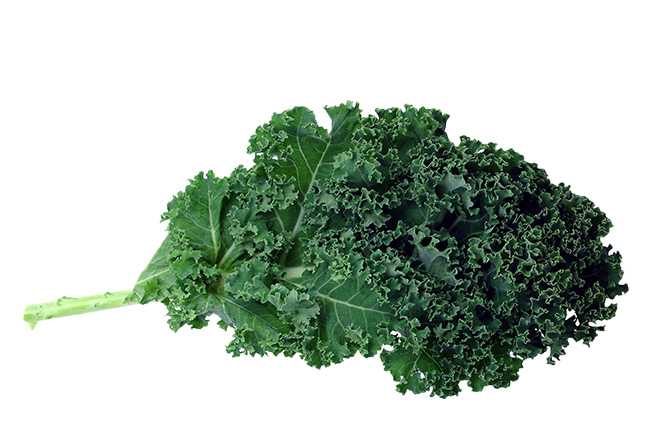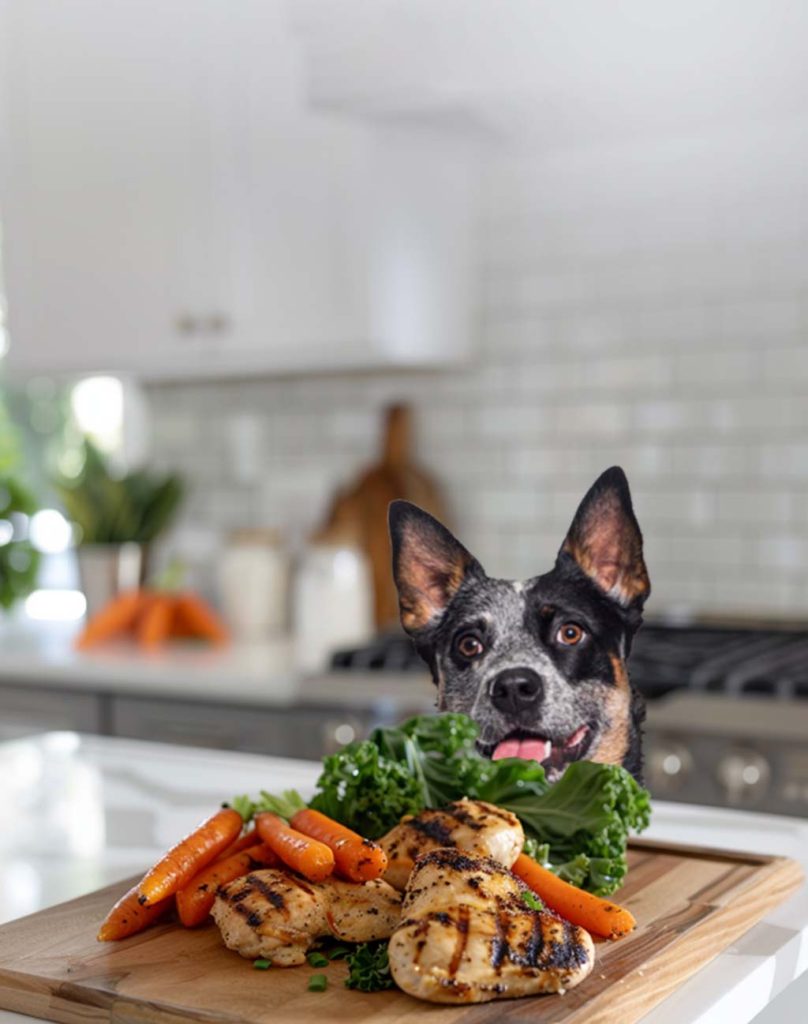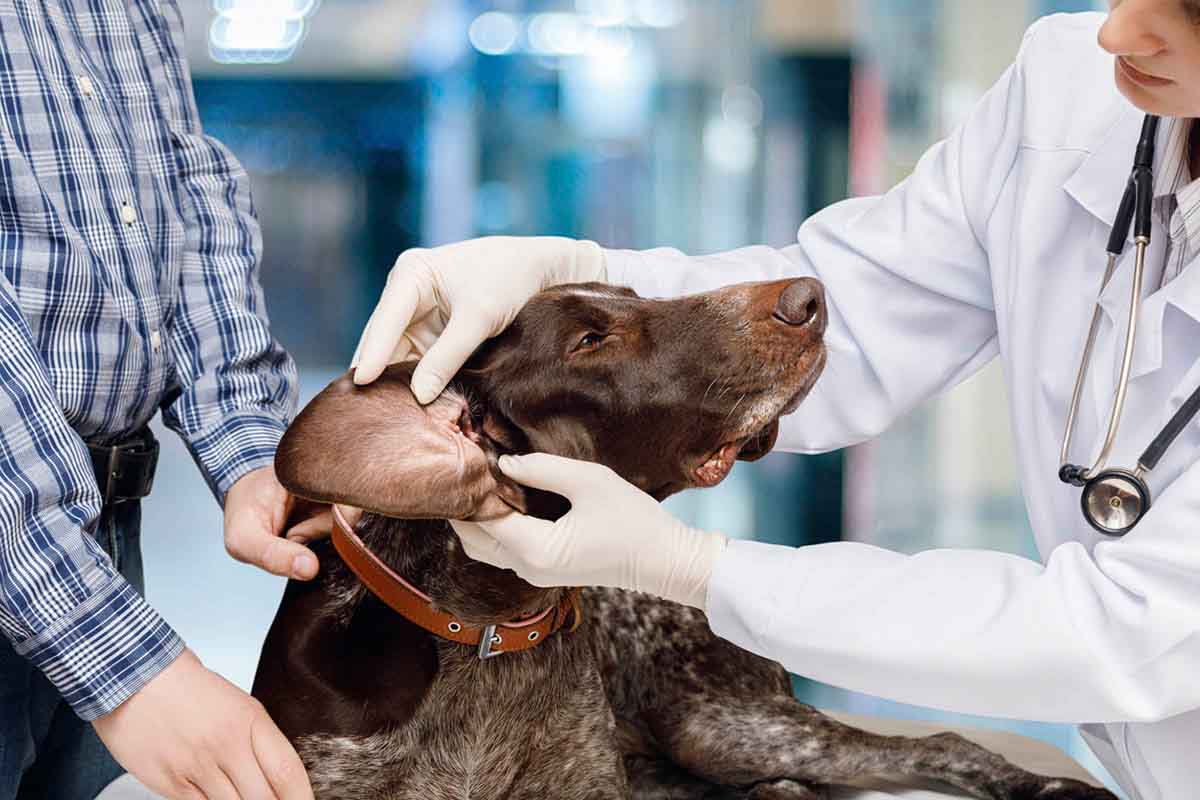Is Kale Safe for Dogs?
Kale is a leafy green veggie packed with vitamins and minerals that are great for humans. But Is kale safe to safe with our dogs?
Kale is a leafy green veggie packed with vitamins and minerals that are great for humans. But Is kale safe to safe for dogs?
Loving pet parents face some hard choices when picking the appropriate dog food for their furry friends. You want something that has all the nutritional benefits for your buddy to have a healthier, longer life, but there are a lot of choices and many different theories about what constitutes good dog nutrition.
We see so many different ideas for human food, and it’s easy to think the same might apply to your pooch. The problem is that what’s good for humans doesn’t always mean it’s good pet food.
One of the latest trends is feeding kale to your dog, but what is kale, and is it good or bad for dogs? Leafy green veggies packed with vitamins and minerals are considered superfoods for humans, but does that translate to what’s good for pet health? Let’s take a look.
What Is Kale?

Kale is a cruciferous vegetable in the mustard family. Similar vegetables include broccoli and Brussels sprouts. Kale is most closely related to cabbage. Like cabbage, it has tough leaves and can endure extreme temperatures, both hot and cold.
This makes it something that can last a long time and can be grown year-round, which is great for humans who need those leafy greens. It’s also a great source of Vitamin K, which is essential for blood clotting, as well as Vitamin C, calcium, magnesium, potassium, and beta-carotene.
These are nutritional elements that both humans and dogs need. Research suggests there may be some health benefits for your dog if he eats some kale.
What are the Health Benefits of Eating Kale?
The vitamins and minerals in kale, like vitamins A, C, and B6, may help lower cholesterol. Additionally, many of these are antioxidants that scavenge free radicals, reducing the damage caused by oxidation.
The other nutritional benefits of cooked kale include supporting your dog’s eyesight and the health of his liver, blood, colon, and muscles. Moreover, the manganese in kale can help support your pooch’s immune system and bone health.
Kale is also a good source of fiber, which is good for your dog’s digestive system. Finally, with only 20 calories per cup of raw kale, it’s a low-calorie way to support your dog’s overall health.
Thus, as part of a balanced diet, there is research that suggests kale can be very beneficial. If it’s good for your dog to eat kale, are there also some elements in kale that can cause health problems in dogs?
Why Can Kale Be Dangerous for Dogs?
Is kale safe for dogs? While pet owners want to give their four-legged friends all the benefits of a balanced diet, not everything that has certain nutritional benefits is 100% safe for dogs in eaten in large amounts. Kale has numerous healthy vitamins and minerals, but it also contains substances that may contribute to certain health issues, such as kidney stones, bladder stones, and thyroid issues.
The is a such thing as too much of a good thing. Moderation, of course, is key. Below are some factors to consider.
Calcium Oxalate
An element found in kale is a compound of calcium and oxalic acid known as calcium oxalate. It’s an organic compound found in many plants, and it is responsible for forming hard clumps, crystals, or stones in the kidneys and bladder.
Kidney stones and bladder stones are extremely painful when they move from the kidneys to the bladder and then when they pass through the urethra to exit the body. They can even cause a blockage along the way. This can quickly become life-threatening. Some larger stones may also need to be surgically removed.
Isothiocyanates
Other components of kale are compounds that contain sulfur. These are called isothiocyanates, and they can cause certain digestive issues in large amounts, including severe gastrointestinal distress in your pooch.
Iodine and Nitrates
Both you and your dog need iodine for thyroid function. A deficiency may result in hypothyroidism, a health condition that results in a slower metabolism and exhaustion, among other problems. Certain vegetables, like kale, cause iodine to build up in the body.
While that might sound good, if your dog is on medication for hypothyroidism, it’s possible he can get too much of a good thing. Too much iodine can cause him to have gastric irritation and vomiting as well as diarrhea. In some severe cases, it may even lead to a coma or cancer.
How Much Kale Should You Feed Your Dog?

Because of the potential adverse reactions to some of the elements in kale, it’s only safe in small quantities. Cruciferous vegetables shouldn’t be a problem for your dog as long as they make up less than 10% of his diet. If you feed more than that, even a healthy dog can have health problems. Should the level rise above 25% of your dog’s diet, cruciferous vegetables can be toxic.
If your dog has a history of problems like bladder stones, kidney stones, or thyroid problems, you shouldn’t feed him kale or other cruciferous veggies. Even just a few could lead to problems that would require a visit to the vet.
Just remember that, as with all things, moderation is key. Keep the cruciferous vegetables to a minimum, and you won’t likely encounter any problems for your dog. Still, the first time you feed kale or any new food to your dog, you’ll want to just give him a little and watch for adverse reactions.
If you see him vomiting, having diarrhea, or any other signs of distress, stop giving him kale and seek advice from your vet. If you don’t see any problems after your dog eats kale initially and continue to feed him kale, watch for any long-term changes in his behavior.
For example, if you notice changes to your dog’s urination, such as struggling to urinate, going more frequently, or only being able to urinate a little bit at a time, stop giving him kale and seek advice from your vet immediately.
How Can You Feed Kale to Your Dog?

Because your dog’s digestive system is different from yours, you prepare kale a little differently for him than you do for yourself. You can serve kale as a treat or as part of your dog’s main meal. Remember that, as with any new food, you want to introduce kale to your dog’s diet slowly and watch for any indications of an adverse reaction. Here are several ways to prepare it.
How to prepare kale for dogs:
- Thoroughly Wash the kale before serving. Just as with your own leafy greens, thoroughly wash the kale before serving it, even if you are cooking it. You want to make sure to remove any pesticides or other contaminants before giving it to your buddy.
- Raw Kale: While your dog can eat kale raw, it’s easier for him to digest if it is cooked or steamed. Still, he can eat raw kale in small amounts. Just remember to remove the stems and chop it into small pieces.
- Steam It: You can steam the kale for your dog. Just be sure that you don’t prepare it with any additives. Seasonings like oil, salt, or other flavored spices can be toxic for dogs, so keep it plain and simple.
- Cook It: Kale for a snack or homemade dog food can also be cooked, but again, no additional seasonings. Be careful of other vegetables, too, as some of those can be toxic for dogs. Garlic and onions, for example, are toxic to your furry friend.
- Puree It: Pureeing kale is a great way to make this strong, leafy green easier for your pooch to digest.
- Remember, a balanced diet is best. Serve kale with a protein, such as chicken or beef. That helps ensure your dog will get all the nutrients he needs in a balanced way.
- Serve in Moderation: Too much of a good thing can be bad, and that’s true with kale. Feeding your dog small amounts of kale occasionally can be a great addition to his diet, but don’t do it too often or serve him too much. Remember, there are some elements in kale that can cause health problems, so it’s best to serve it in moderation.
What Other Vegetables Can My Dog Eat?
There are a number of other vegetables that are safe for your dog to eat. Many are better options than kale if your dog has kidney, bladder, or thyroid problems. Additionally, since there are elements of kale that can cause health issues, you might prefer to avoid it altogether. Here are some great alternatives if you make that choice:
- Green beans
- Peas — green peas, snow peas, and snap peas
- Celery
- Cucumbers
- Carrots
- Zucchini squash
Are There Dog Foods with Kale?
There are dog food brands that have kale as an ingredient, and that may be the best way to share this leafy green with your pup. JustFoodForDogs has three recipes with kale as an ingredient. Moreover, our fresh food recipes use whole ingredients that deliver human-grade nutrition. You can’t go wrong if you’re looking for a great way to provide your buddy with a balanced diet!
This content is for informational use only and does not replace professional nutrition and/or medical advice, diagnosis, or treatment. Do not rely on or use as a substitute for specific nutrition and/or medical recommendations. Please talk with your veterinarian about any questions or concerns.
Citations
M, Raghavan, Knapp Dw, Bonney Pl, Dawson Mh, and Glickman Lt. 2005. “Evaluation of the Effect of Dietary Vegetable Consumption on Reducing Risk of Transitional Cell Carcinoma of the Urinary Bladder in Scottish Terriers.” Journal of the American Veterinary Medical Association. July 1, 2005. https://pubmed.ncbi.nlm.nih.gov/16013542/.
Tanprasertsuk, Jirayu, Devon E. Tate, and Justin Shmalberg. 2021. “Roles of Plant‐Based Ingredients and Phytonutrients in Canine Nutrition and Health.” Journal of Animal Physiology and Animal Nutrition, September. https://doi.org/10.1111/jpn.13626.
Khan, Saeed R., Margaret S. Pearle, William G. Robertson, Giovanni Gambaro, Benjamin K. Canales, Steeve Doizi, Olivier Traxer, and Hans-Göran Tiselius. 2016. “Kidney Stones.” Nature Reviews Disease Primers 2 (1): 1–23. https://doi.org/10.1038/nrdp.2016.8.
Southern, Alison P., and Sharhabeel Jwayyed. 2021. “Iodine Toxicity.” PubMed. Treasure Island (FL): StatPearls Publishing. 2021. https://www.ncbi.nlm.nih.gov/books/NBK560770/.








